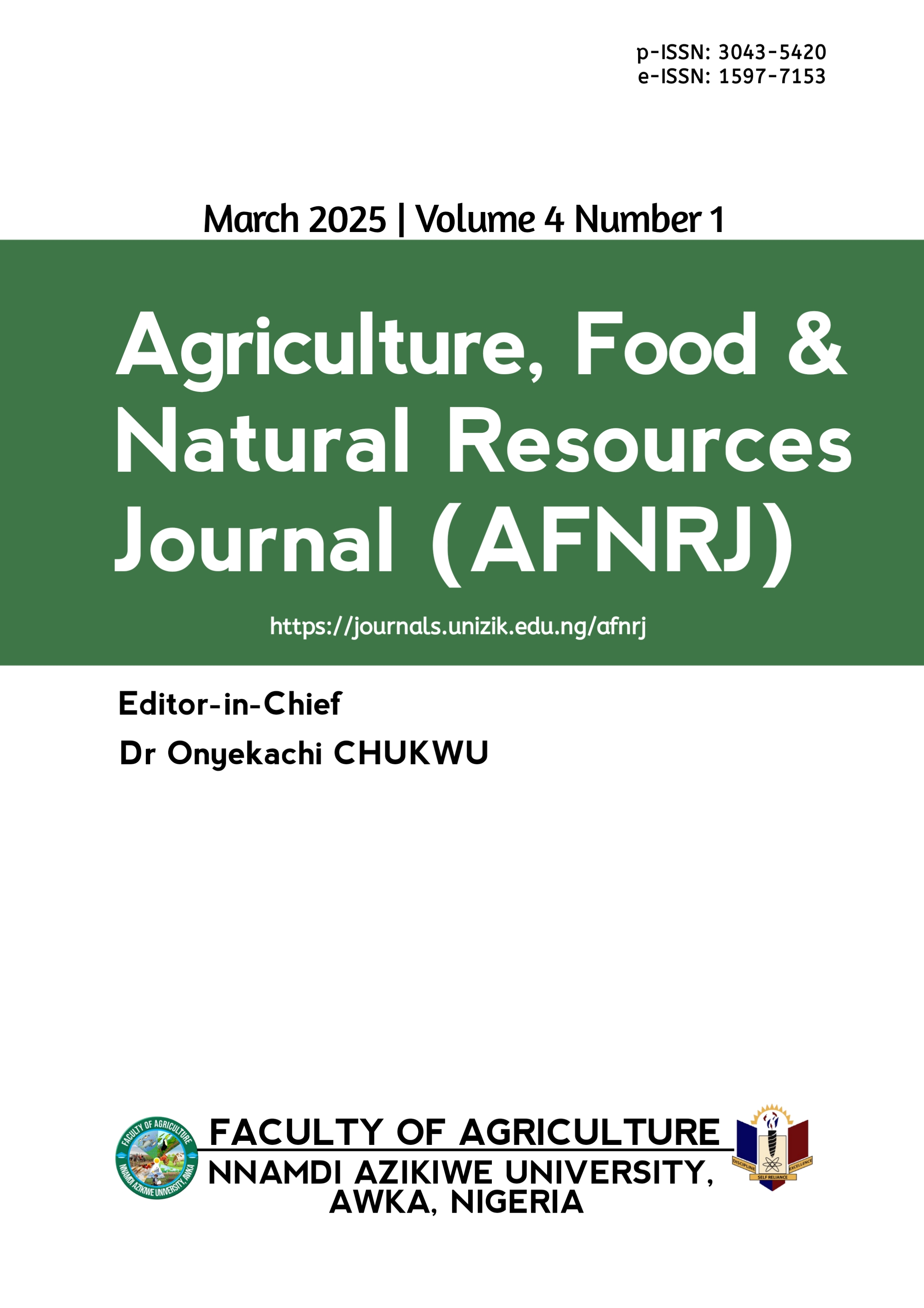Phytochemical and sensory evaluation of functional tea produced from Lemongrass, Turmeric bud and Moringa leaf
DOI:
https://doi.org/10.5281/zenodo.15105747Keywords:
Flavonoids, Herbal tea, Indigenous plants, Tannins, Phenols, SaponinsAbstract
The study was done to determine the phytochemical and sensory properties of functional tea produced from blends of lemongrass (Cymbopogon citratus), turmeric (Curcuma longa), and Moringa (Moringa oleifera) leaves (LTM). Lemongrass and moringa leaves were sorted, washed, and dried using a dehydrator at 60°C for 8 h, while the turmeric rhizome was oven-dried at 90°C for 8 h, ground, sieved, and packaged. The functional tea was divided into 5 samples containing different ratios of lemongrass, turmeric, and moringa: (LTM1) 70:20:10, (LTM2) 67:28:5, (LTM3) 63:30:7, (LTM4) 60:30:10, and (LTM5) 70:23:7. Tea from 100 % lemongrass served as the control. Phytochemical and sensory analysis were carried out on the functional tea samples. From the results obtained, sample LTM4 recorded the highest concentration of tannins (1.30%), saponins (1.40%), flavonoids (0.92%), and total phenols (0.43 mgGAE/g). The combination of the plants was shown to improve all the phytochemical parameters measured when compared to the control sample. The functional tea samples were also generally accepted by the panelists, as they all had a mean score above 5, with sample LTM1 (70:20:10) being the most preferred sample. This study has shown that functional tea can be produced from a combination of lemongrass, turmeric, and moringa.
Downloads
Published
Issue
Section
License

This work is licensed under a Creative Commons Attribution 4.0 International License.
which permits unrestricted use, distribution, and reproduction in any medium, provided the original author and source are credited.
Authors retain the copyright of their published work in the AFNRJ.





